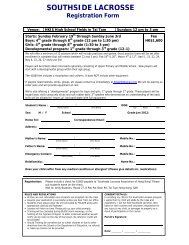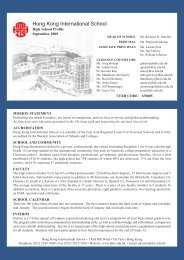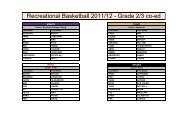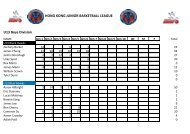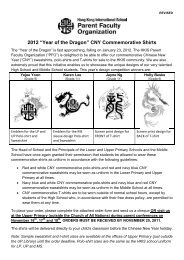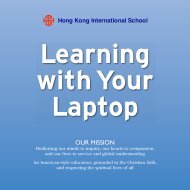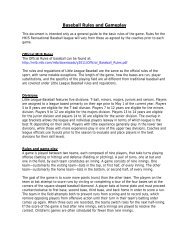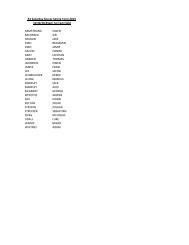Lower Primary School Parent Handbook - DragonNet - Hong Kong ...
Lower Primary School Parent Handbook - DragonNet - Hong Kong ...
Lower Primary School Parent Handbook - DragonNet - Hong Kong ...
Create successful ePaper yourself
Turn your PDF publications into a flip-book with our unique Google optimized e-Paper software.
Research-Based<br />
Literacy Instruction<br />
In order to attain our high literacy standards, the <strong>Lower</strong> <strong>Primary</strong> has established a<br />
Balanced Approach to Literacy Instruction. The key instructional strategies which<br />
make up this approach are effective in addressing the literacy needs of young<br />
learners. All our teachers utilize these strategies in appropriate ways to ensure that<br />
our students make progress toward the benchmarks for their grade level. When<br />
visiting your child’s classroom you will see students engaged in these reading and<br />
writing activities. Teachers balance time between whole class instruction, small group<br />
instruction, and individual conferences, in order to differentiate and meet the needs of<br />
all students.<br />
Balanced Literacy<br />
READING WRITING<br />
Reading Workshop<br />
Students receive direct, explicit instruction in reading<br />
strategies and are allowed to choose books independently<br />
with guidance from teachers, based on ongoing<br />
assessments. An emphasis is placed on comprehension and<br />
independence, with structures in place that allow students<br />
time to talk and share thinking with others. A “reading<br />
community” is created, where students learn to take risks<br />
and read a lot! Celebrations typically mark the end of a<br />
reading unit/cycle.<br />
Interactive Read Aloud with Accountable Talk<br />
The teacher reads aloud to the whole class or small groups<br />
from a carefully selected body of children's literature which<br />
contains a variety of genres and represents our diverse<br />
society. As teachers read, they stop to model their thinking<br />
for students. At the end of a read aloud teachers may<br />
conduct a whole class discussion. Favorite texts, selected for<br />
special features, are reread many times.<br />
Shared Reading<br />
Using an enlarged text so that all children can see, the<br />
teacher involves children in reading together following a<br />
pointer. The process often includes reading big books,<br />
poems, songs and student writing, so that students develop<br />
concepts of print, phonemic awareness, and deeper<br />
comprehension.<br />
Guided Reading<br />
The teacher works with small groups who have similar<br />
reading processes. The teacher selects and introduces<br />
new books and supports children reading the whole text<br />
to themselves, making teaching points during and after the<br />
reading.<br />
Writing Workshop<br />
Students generate ideas and author their own pieces<br />
across the school year. The teacher gives explicit instruction<br />
about the many different writing genres and strategies, and<br />
regularly models for students his or her own writing. Students<br />
then spend solid amounts of time everyday composing and<br />
drafting their own pieces, following an authentic writing<br />
process that leads them through revision and publication<br />
at the end of each writing cycle. <strong>Parent</strong>s are often invited<br />
to class events, where students celebrate their published<br />
pieces!<br />
Shared Writing<br />
Teacher and children work together to compose messages<br />
and stories. The teacher supports the process as a scribe.<br />
Interactive Writing<br />
As in shared writing, the teacher and the children compose<br />
messages and stories that are written using a “shared pen”<br />
technique that involves children in the composition and<br />
transcription of the text.<br />
Guided Writing<br />
Children engage in writing a variety of texts. The teacher<br />
guides the process and provides instruction through mini<br />
lessons and conferences.<br />
Word Study<br />
Woven through the activities in this framework, teachers<br />
have opportunities to help children notice and use letters<br />
and words. Students develop their understanding of the<br />
English language and how words work. Knowledge is further<br />
fostered through the use of word walls and other writing<br />
tools.<br />
Adapted from: Fountas, I. and Gay Su Pinnell. 1996. Guided Reading: Good First Teaching for All Children. Portsmouth,<br />
NH: Heinemann, pp. 22-23.<br />
46 <strong>Hong</strong> <strong>Hong</strong> International <strong>School</strong>



